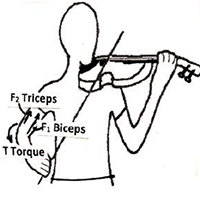 Smart Citations
Smart CitationsSee how this article has been cited at scite.ai
scite shows how a scientific paper has been cited by providing the context of the citation, a classification describing whether it supports, mentions, or contrasts the cited claim, and a label indicating in which section the citation was made.
Neuro-mechanical aspects of playing-related mobility disorders in orchestra violinists and upper strings players: a review
Orchestra musicians are at high risk of neuro-mechanical disorders due to the intense stresses their body withstand, leading to pain and injury. This review presents a comprehensive account of the works on the circumstances and types of playing related mobility disorders of upper strings players, as well as on the relevant neuro-mechanical factors and perspectives to those disorders. The following aspects are considered: asymmetry and imbalance in the musculo-skeletal system, muscle-bone-joint interactions, repetitive overloading and fatigue. An additional factor relates to neuro-muscular redundancy in the motor system, whereby more muscles and tendons than strictly necessary are engaged in performing a motor task, thus making the system indeterminate, with no unique solution. This same task can be performed with different muscle combinations. It is thus of interest to verify whether playing disorders may be alleviated by considering alternative techniques of performance.
Downloads
Citations
10.1016/j.apergo.2023.104018
10.3390/brainsci12101304
10.1177/19484992251327961
10.3390/app11052035
10.3390/ijerph18084084
10.1007/s40664-024-00565-w
10.1177/00187208211033450
10.1080/00140139.2023.2221416
10.1016/j.jksus.2023.103026
10.4103/jdmimsu.jdmimsu_574_24
10.47197/retos.v55.104062
10.3389/fpsyg.2024.1303046
10.17179/excli2021-4208
10.1016/j.jht.2021.04.006
How to Cite
PAGEPress has chosen to apply the Creative Commons Attribution NonCommercial 4.0 International License (CC BY-NC 4.0) to all manuscripts to be published.

 https://doi.org/10.4081/ejtm.2020.9095
https://doi.org/10.4081/ejtm.2020.9095




